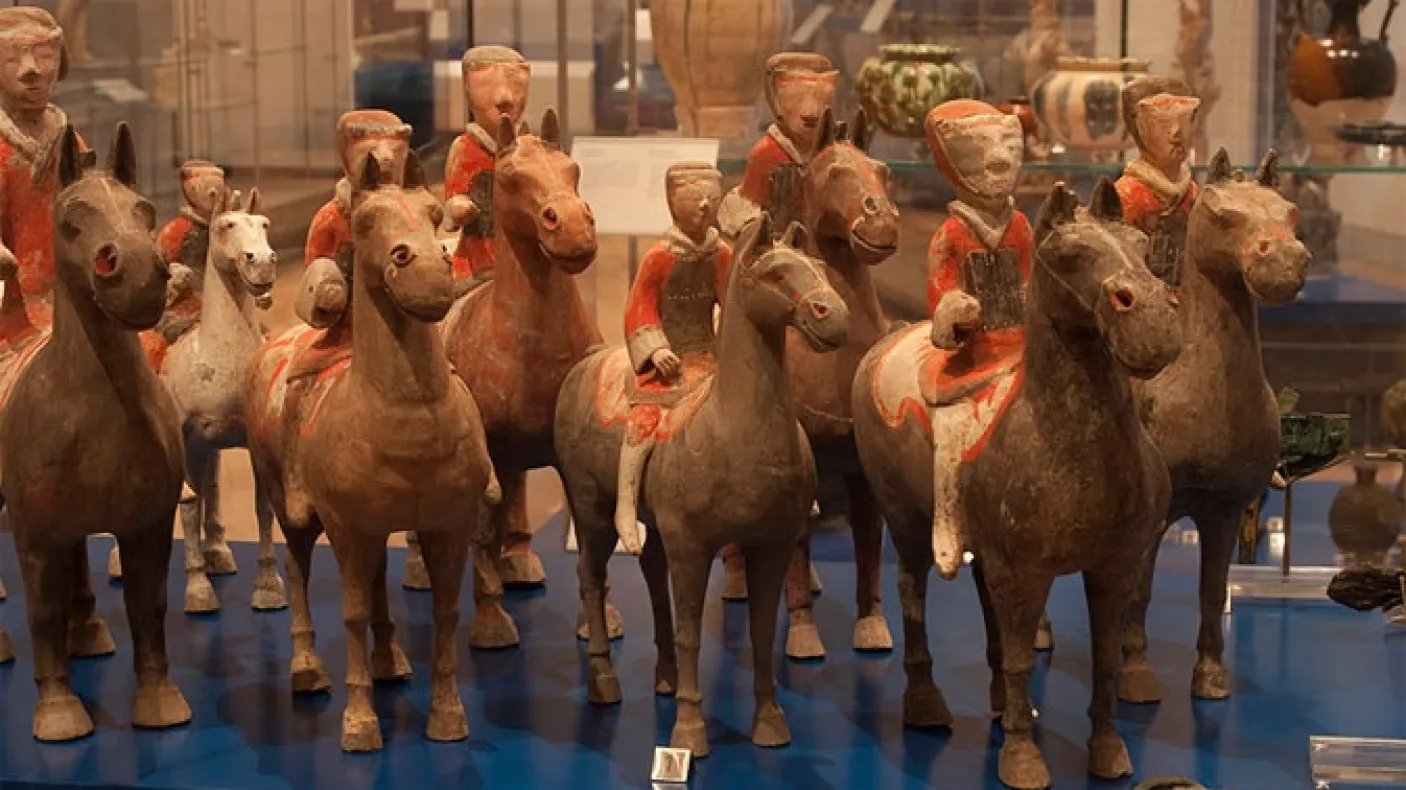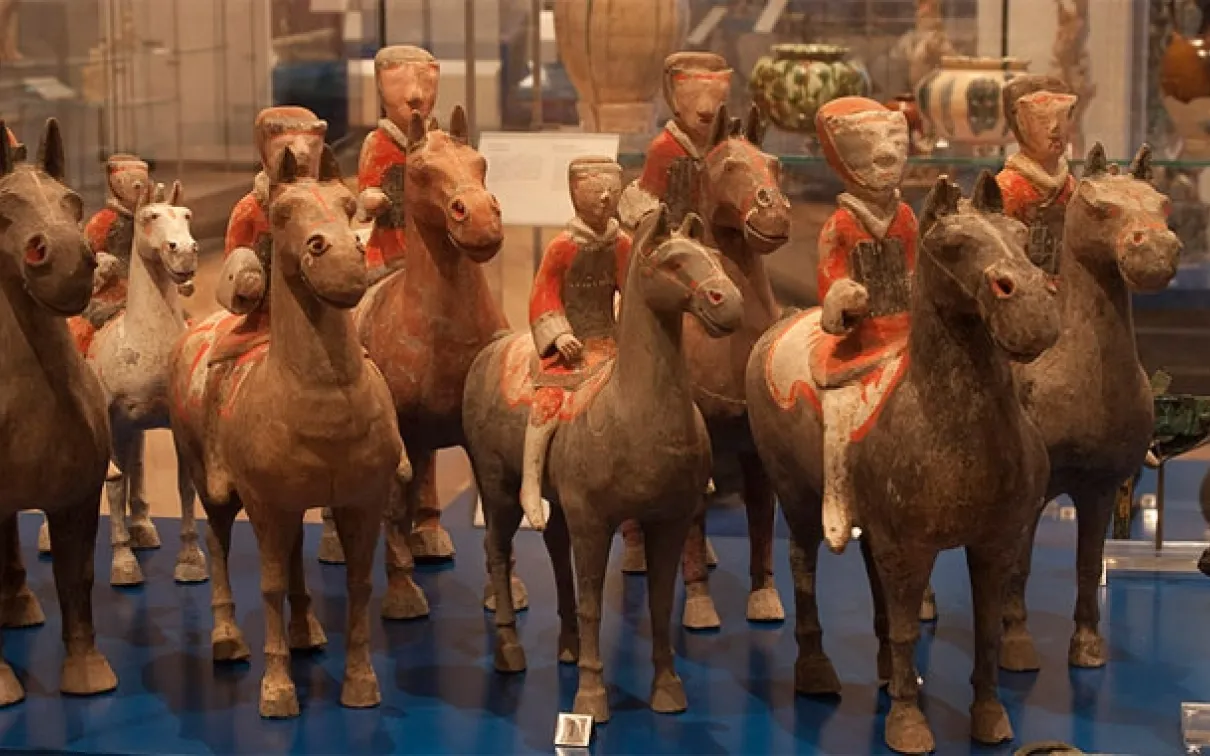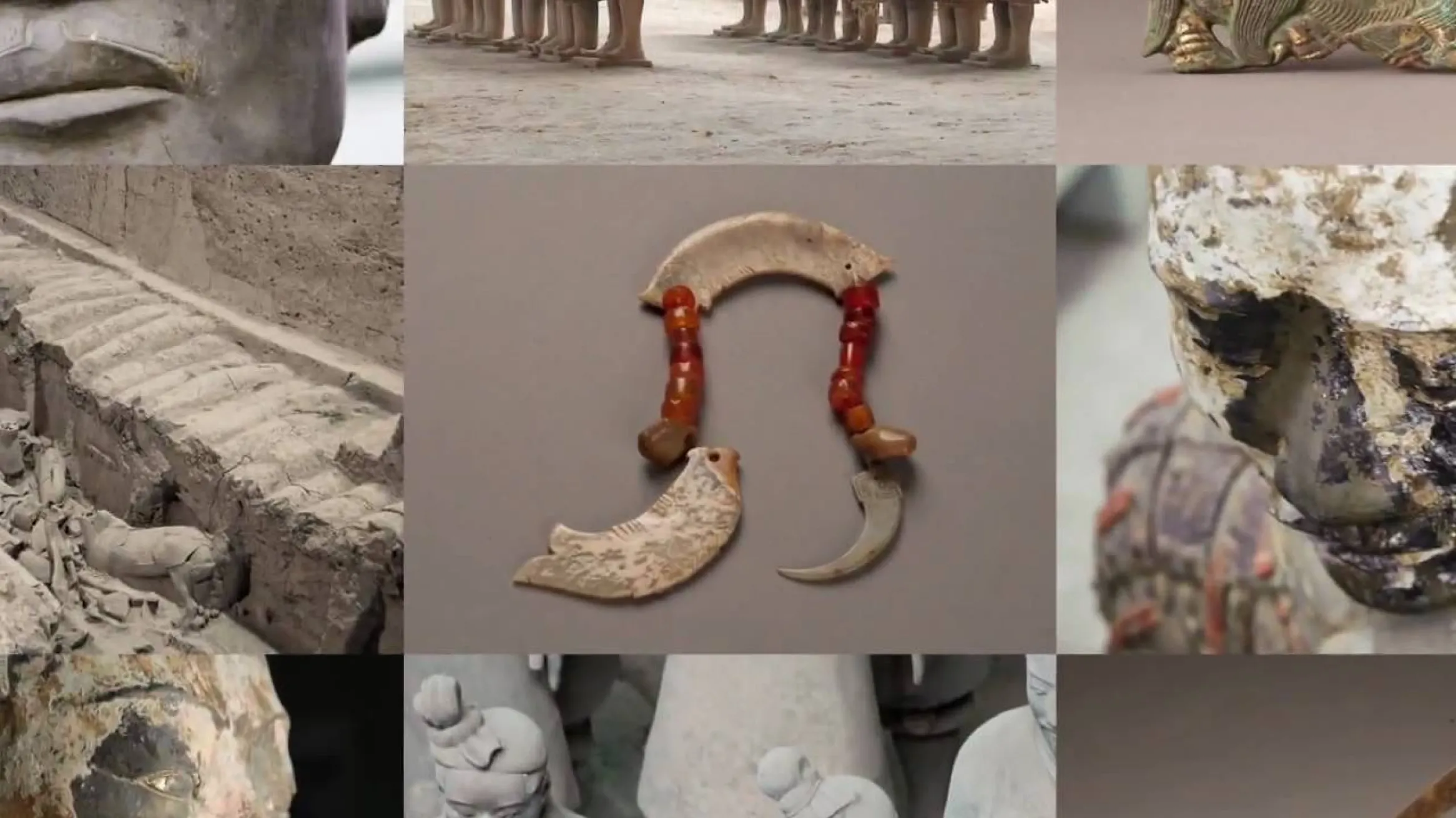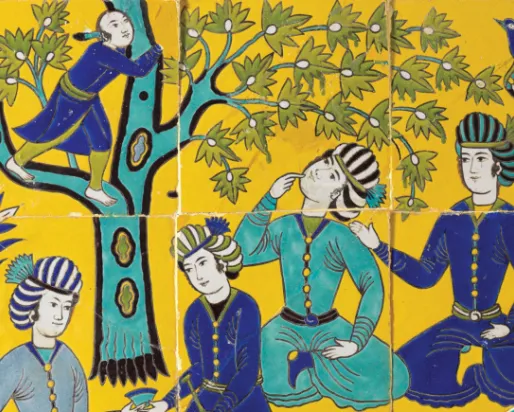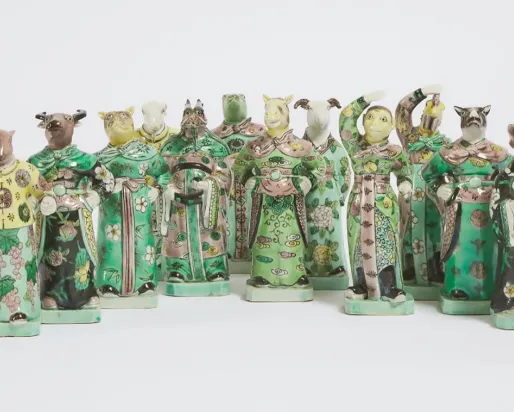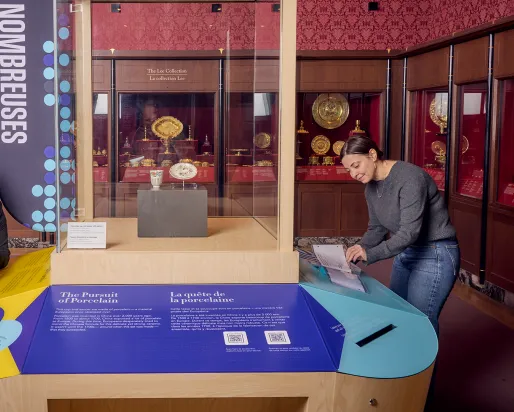The Warrior Emperor and China’s Terracotta Army
Date
About
In 1974, farmers in northern China accidentally unearthed fragments of a terracotta figure - the first evidence of what would turn out to be one of the greatest archaeological finds in history. The terracotta army pits of the Warrior Emperor Ying Zheng.
The Warrior Emperor and China's Terracotta Army premiered at ROM on June 26, 2010 and ran until January 2, 2011. The exhibition showcased artifacts from the tomb complex of China's First Emperor - the largest tomb complex in China, and possibly the world.
Buried 2,200 years ago in what is now China's northern Shaanxi province, the First Emperor surrounded himself with nearly 8,000 full sized terracotta warriors and horses in magnificent military formations, along with many other artifacts, in preparation for the afterlife. The warriors are often referenced as the eighth wonder of the world and in 1987 the site was added to the official list of World Heritage Sites by the United Nations Educational, Scientific and Cultural Organization (UNESCO).
Created by ROM with our partners in China, The Warrior Emperor and China's Terracotta Army features the largest collection of artifacts related to the warrior emperor ever displayed in North America, alongside 10 life-sized terracotta figures from the pits of the First Emperor's Terracotta Army. Tracing key moments in history before, during and after the lifetime of Ying Zheng, ROM is showcasing over 250 artifacts from the first millennium BC, on loan from more than a dozen archaeological institutes and museums in Shaanxi Province. Nearly a third of the artifacts on display have never been shown outside of China, and some have never been publicly displayed anywhere, making ROM's exhibition a landmark event.
Highlighting the life, times, and afterlife of the First Emperor of the Qin dynasty, as well as the terracotta soldiers produced during his lifetime, the exhibition explores the figures in a broad historical and social context. Visitors will learn about China’s rich history during these periods and about the political and social transitions, including the dramatic change from war to peace, that took place during various dynasties.
Highlights
The Warrior Emperor
Powerful and ambitious, Ying Zheng was the first Emperor of China, coming to power initially as the King of Qin at the age of 13. During his reign he built an empire which at its height rivalled that of Rome's, and would prove to be more enduring.
One of the greatest military leaders of all time, Ying Zheng unified China after 500 years of conflict bringing about great political, social and cultural reform. Between 230 and 221 BC Zheng conquered every rival realm in China and founded the first unitary Chinese empire. He brought to a close the centuries of warring states and established the norms of governance, law and administration that would characterize China for over two thousand years.
When he died, the First Emperor left behind many monumental building projects such as the first Great Wall of China. He also left extraordinary tomb structures, the likes of which had never been seen before in modern or ancient times. Even in the afterlife, the Warrior Emperor sought to ensure continued dominance by creating the largest tomb complex in history. And to help realize this goal, he interred with himself an army of around 8,000 life-sized terracotta warriors.
Ying Zheng remains a controversial figure in Chinese history. While his autocratic rule lasted 37 years and was heavily marked by tyranny and bloodshed, he also accomplished much during his reign, such as establishing a strong central government, unifying the law code and standardizing coinage, weights and measures, as well as starting a national road and canal system. It is, however, the terracotta warriors that constitute the most tangible evidence of Ying Zheng's legacy.
The Terracotta Army
Since their discovery in northern Shaanxi Province in 1974, China's Terracotta Army has captured the world's attention. Created 2,200 years ago, these remarkable life-sized sculptures of warriors, found in the underground tomb complex of China's first Emperor, are considered one of the most significant archaeological finds in history.
To date, archaeologists have unearthed approximately 2,000 full-sized terracotta warriors and horses from three ancient pits. Located near the First Emperor's tomb complex, the terracotta site is only a small component of the largest tomb construction in China – possibly the largest in the world. It is also the location of the country's first onsite museum. As this site continues to be excavated, the terracotta figures are now known to number nearly 8,000 with scores yet to be excavated.
ROM's exhibition showcases 10 life-sized terracotta figures including a range of military and civic personnel. Highlights include two of only nine generals ever found, two horses and a striking figure of a kneeling archer – are rare example of a figure with paint remnants still in tact.
Each figure is unique, exquisitely executed and accorded a distinct personality. In addition to appreciating the power and artistry of these figures up close, visitors to the Museum will learn about the making of the terracotta army including production techniques.
Other Highlights
The Warrior Emperor and China’s Terracotta Army features nearly 250 artifacts dating mostly to the first millennium BC which include the terracotta army, but also numerous other stellar objects making their North American debut. Loaned by 15 of the most important archaeological institutes and museums across Shaanxi Province, nearly 30 per cent of the exhibition’s featured objects have never before been displayed internationally.
Highlights includes numerous gold objects, such as this elaborate bridle fitting, a bronze ritual vessel describing the history of a noble family that served the Kings of Zhou in 8th century BC, a bronze bell which verifies the status and responsibilities of one of the First Emperor’s ancestors, two terracotta horses found alongside the terracotta army, and a beautifully crafted kneeling female figure from the harmonious Han, a period of peaceful consolidation after the Emperor’s death.
